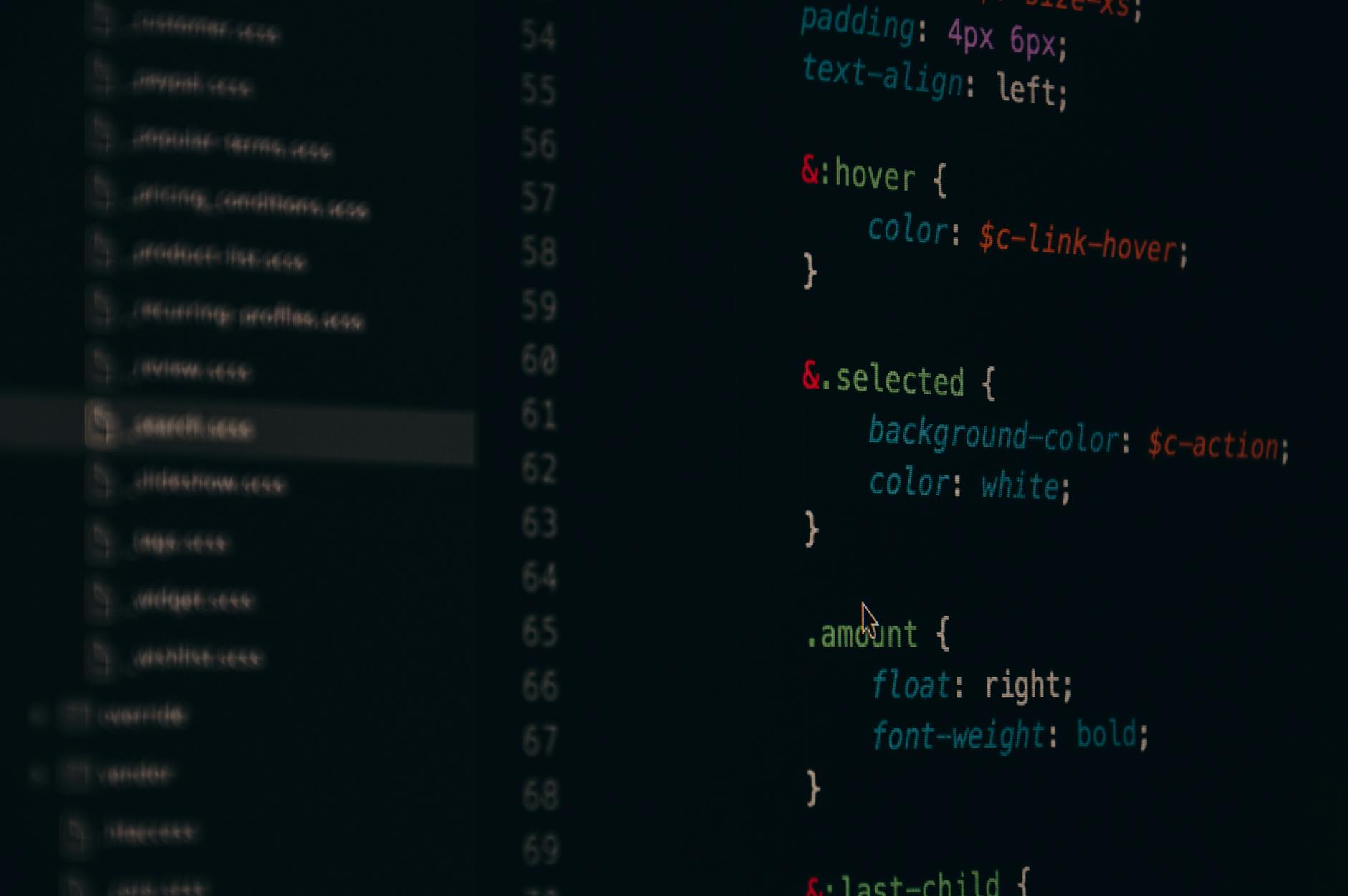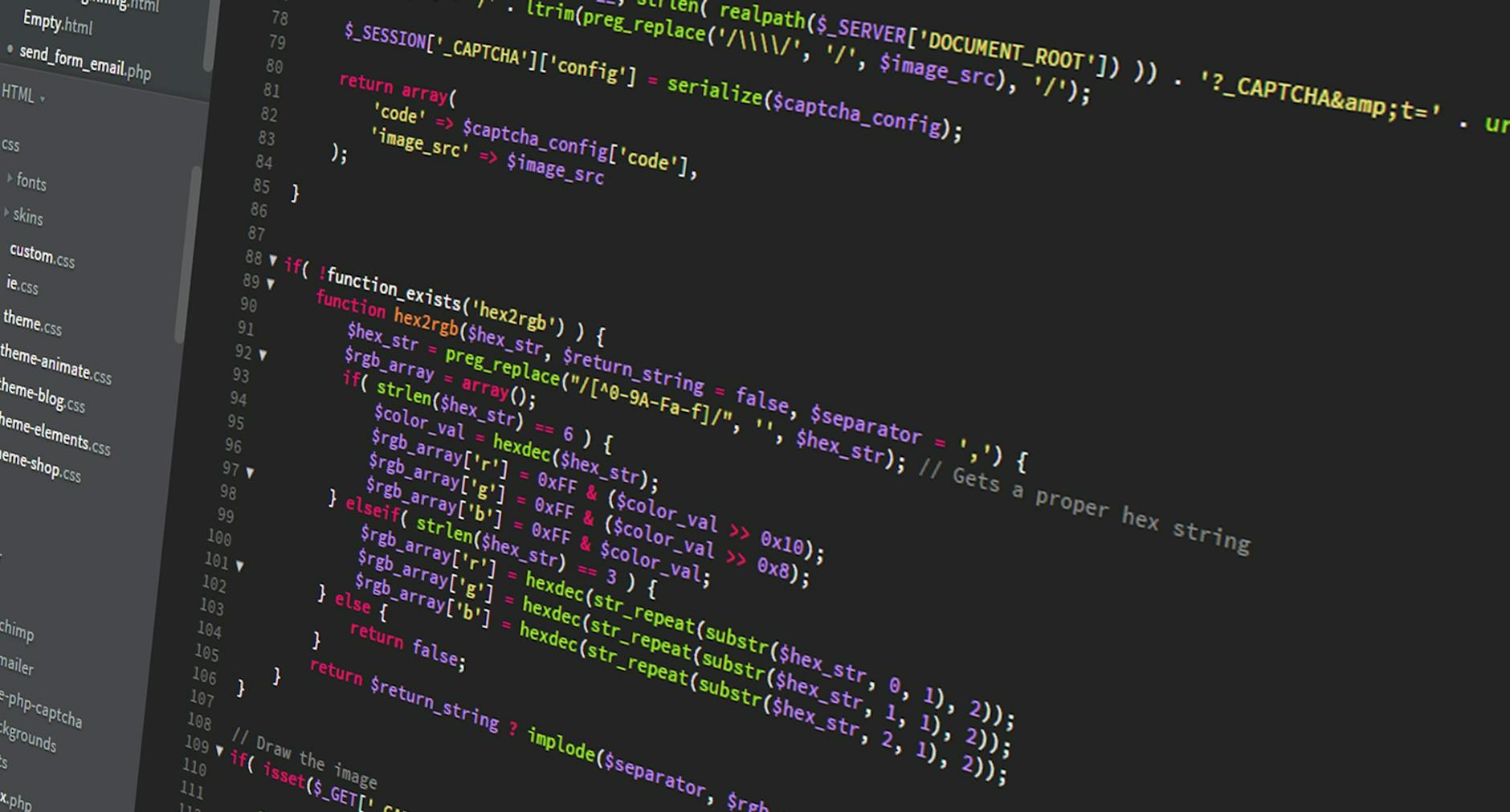Choosing Wisely: Programming Language Comparison
Understanding Programming Languages
Grasping the basics of interpreted versus compiled languages and knowing the difference between scripting and programming languages is essential for budding coders. This knowledge can guide them towards choosing the best tool for their projects.
Interpreted vs. Compiled Languages
When it comes to interpreting languages, think of them as translators, working line-by-line while the program runs. This might slow things down because they’re doing their thing live, at runtime. Classic examples are Python and JavaScript. GeeksforGeeks explains that interpreters process every line individually whenever they bump into one.
Compiled languages, on the other hand, do the heavy lifting up front. They crunch through the code once, turning it into machine code, which speeds stuff up during execution. They catch all the errors and let you know in one go. Familiar faces in this camp include C++ and Java.
| Language Type | Processing Method | Examples | Performance |
|---|---|---|---|
| Interpreted | Line-by-line translation | Python, JavaScript | Slower |
| Compiled | Converts to machine code initially | C++, Java | Faster |
For a deeper dive into speed comparisons, check out python vs java performance.
Scripting vs. Programming Languages
The script versus program debate centers on what they’re best at and where they hang out. Scripting languages are your go-to for automating tasks inside a particular environment, like putting dishes away in the kitchen’s runtime. You’ll usually find them on the interpreted side. JavaScript and Bash are common suspects.
Programming languages, though, are the engineers, building complex apps with all the smack and know-it-all from compiled languages like C# and Java.
Sometimes, a language can wear more than one hat. Like JavaScript – mostly known as a scripting whiz, but thanks to Google’s V8 engine, it can also act like a compiled language. Lines blur, showing it’s all about context (shout out to GeeksforGeeks).
| Classification | Common Use Case | Examples |
|---|---|---|
| Scripting | Automating tasks in environments | JavaScript, Bash |
| Programming | Crafting full-blown apps | C#, Java |
New to coding and pondering which language to tackle first? Have a look at which programming language should I learn first.
Hungry for more on popular languages and their uses? Swing by most popular programming languages and learn some software development best practices.
Key Features of Programming Languages
Programming languages each have their own quirks and perks that can make or break their usefulness. Here, we’ll check out three big deal features: syntax and readability, data types and declarations, and how quick you can get stuff done with them. That’s geek speak for helping new programmers pick their programming poison.
Syntax and Readability
Syntax and readability are like the friendliness meter of a programming language. Is it a nice language? Python’s a shining star here, loved by newbies for its clean writing style that’s easy on the eyes. The Python crew made sure the language supports regular programming behaviors and pushes for readable code.
Now, if you wander into Perl territory, things get a bit murkier. It’s geared for getting stuff done, which sometimes makes code look like it was written by robots in a hurry. Java falls somewhere in the middle; it’s more by-the-books than Python but still focuses on keeping things neat with its teach-savvy object-oriented approach.
| Language | Syntax Readability |
|---|---|
| Python | High |
| Java | Moderate |
| Perl | Low |
Data Types and Declarations
How a language handles data types and variable declarations tells you a lot. Python doesn’t make you declare stuff upfront, giving you the freedom to switch things up on the fly, which means you can whip up code faster. And with its built-in high-level data smarts, it can juggle quite a few tasks efficiently (Python.org).
Java, though, is a stickler for rules, insisting on static types and declared variables before you can even say “boolean.” Sure, this adds some heft to your code, but it also helps spot type mix-ups before they wreak havoc on your work.
| Feature | Python | Java |
|---|---|---|
| Typing | Dynamic | Static |
| Declarations | Optional | Required |
| Efficiency in Data Handling | High | Moderate |
Code Development Efficiency
How speedy is a language at turning your thoughts into working code? Python’s got a leg up here, chopping down lines of code, making it quick to work with. It’s 3-5 times more concise than Java and far ahead of the bulkier C++. Thanks to its flexible typing and data instruments, Python’s great for prototypes and speedy app development (Python.org).
Java leans on structure, requiring more boilerplate and explicit bits. On the upside, it’s great for crafting complex programs thanks to its sturdy object-first principles. There’s chatter that a lone Python coder might do in two months what takes a whole year with two C++ developers. Now, that’s bang for your buck!
| Metric | Python | Java | C++ |
|---|---|---|---|
| Code Length | Short | Moderate | Long |
| Development Time | Short | Moderate | Long |
| Complexity | Low | Moderate | High |
If you’re curious about new trends and language comparisons, check out our write-ups on most popular programming languages and which programming language should i learn first. Plus, diving into best practices in software development might just give you a power boost in your coding journey.
A Closer Look at Python and Java
Here, we’re gonna chat about Python and Java—two big names in the coding game, each with their own set of goodies and gripes. Knowing what makes them tick can help any budding coder pick the right tool for the job.
Python’s Strengths and Weaknesses
Python’s got a rep for being super easy to read and write. It backs up plain ol’ data wrangling and object-oriented coding, nudging developers towards cleaner code that won’t give ’em a headache later (Python.org).
Strengths:
- Simplicity: Python’s style is a breeze, reading almost like English, which makes it a favorite for greenhorns.
- Rapid Development: Writing in Python is quick—folks say you can whip up solutions about 3-5 times faster than in Java. It’s all thanks to high-level data types and dynamic typing (Python.org).
- Conciseness: Python is all about that short and sweet code—it’s usually 3-5 times shorter than the same stuff in Java, and even less verbose than C++ (Python.org).
- Flexibility: From building websites to crunching data and cooking up AI models, Python does it all.
- Glue Language: Python’s your guy when you need to stick together bits written in C++.
Weaknesses:
- Speed: Python tends to be a slowpoke compared to Java.
- Mobile Apps: Java corners the mobile app market, leaving Python in the dust in this area.
Java’s Versatility and Application
Java’s a hard-hitter in the biz world with its solid, transportable design that’s made for building hefty applications.
Strengths:
- Cross-Platform: You write Java code once and it runs anywhere with a Java Virtual Machine (JVM), making it the king of portability.
- Speed: Java’s compiled nature means it steps on the gas faster than Python (Python.org).
- Object-Orientation: It’s built for large-scale apps, nailing complex designs and structures.
- Wide Reach: Java rules the roost in web dev, desktop apps, and especially Android apps.
Weaknesses:
- Verbosity: Java is like a wordy novel—lots of syntax to slog through. Not as quick to pick up or maintain as Python.
- Time-Intensive: More code means more time, so developing with Java can feel like running a marathon when Python’s more of a sprint.
| Feature | Python | Java |
|---|---|---|
| Syntax | Like a friendly chat | Speaks in paragraphs |
| Development Speed | Speedy | Takes its time |
| Performance | A bit sluggish | Gets the job done quick |
| Portability | Eh, so-so | Takes the crown (JVM) |
| Use Cases | Sites, Brainy Projects | All about Apps, especially Android |
Curious about the nitty-gritty and speed runs? Peep our piece on Python vs. Java performance.
Digging Deeper: Each has their perks. Starting out? Python’s simple grace is a good place to begin. But if you’re aiming for robust enterprise power or mobile app wonders, Java’s your go-to. Need help choosing your coding adventure? Swing by our guide on which programming language should I learn first.
Exploring JavaScript and C
Ever wondered why JavaScript and C# are the go-to picks among coders everywhere? Let’s dive into what makes each of these tech marvels shine like a beacon on your programming journey.
JavaScript for Web Interactivity
JavaScript is like that friendly neighbor who livens up the block party—making websites come alive (Northeastern University). It’s crucial for front-end development, adding that magical touch of interactivity and slick design that keeps users coming back for more.
Running on both the server and the user’s browser, JavaScript is everywhere! From client-side to server-side, it’s got all bases covered. Big-time frameworks like React, Angular, and Vue.js lean heavily on JavaScript to make web development faster and more efficient.
| Feature | Details |
|---|---|
| Job Postings | 671,436 |
| Average Salary | $117,100/year |
| Use Cases | Web Development, Server-side Scripting |
| Popular Frameworks | React, Angular, Vue.js |
Curious how JavaScript rules the front-end world? Swing by our article on the most popular programming languages for the scoop.
C# for Application Development
C#, birthed by Microsoft, is your workhorse for cranking out everything from Windows apps to mobile goodies and even the latest video games (Northeastern University). Its power and reliability make it a favorite among those building enterprise-level software.
With C#, you get versatility out the wazoo—imperative, functional, you name it. It’s the Swiss Army knife of languages, perfect for creating applications loaded with complex business logic.
| Feature | Details |
|---|---|
| Job Postings | 353,323 |
| Average Salary | $115,100/year |
| Use Cases | Windows Applications, Mobile Apps, Video Games |
| Development Platform | .NET Framework |
Looking to get a deeper handle on C#? Our deep dive on best practices in software development has you covered.
When it comes down to choosing between JavaScript and C#, it’s all about what you need them to do. Whether you’re the next front-end sensation or the backbone of enterprise solutions, understanding these languages can help steer you in the right direction. Still on the fence about which language to tackle first? Check our guide on which programming language should I learn first to help you figure it out.
Functional vs. Object-Oriented Programming
Let’s talk about programming styles—specifically, functional programming (FP) and object-oriented programming (OOP). They each have their charm, like different ice cream flavors. Both attract loyal fans and plenty of languages to express them. So, let’s dig into what makes functional programming tick and why object-oriented programming is a big deal.
Characteristics of Functional Programming
Functional programming is all about treating math functions like royalty. It’s a bit like making a promise to keep your room clean—never changing anything once it’s set. Here’s what makes it stand out:
- First-Class Functions: Functions here are big shots. You can tuck them into variables, send them off as gifts, and even get one back as a surprise in return.
- Pure Functions: Predictability rules here. Give the same input, get the same output every time. No sneaky changes on the side like messing up your room (i.e., global variables).
- Immutability: Data wears a ‘Do Not Touch’ sign. Want changes? Get a fresh set.
- Higher-Order Functions: These are fun; they play with other functions, calling them over as guests (or even travel with them).
- Lazy Evaluation: No rush in this corner—stuff gets checked out only when needed.
You’ll find functional programming in languages like Lisp, Wolfram, Erlang, Haskell, and F#. It’s a favorite for those diving deep into data science.
| Feature | Functional Programming |
|---|---|
| First-Class Functions | Yes |
| Immutability | Yes |
| Pure Functions | Yes |
| Higher-Order Functions | Yes |
| Lazy Evaluation | Yes |
Benefits of Object-Oriented Programming
Now, object-oriented programming (OOP) is the socialite sibling. It loves organizing everything into neat objects. Perfect for when you’re building something big and complex. Here’s what you get with OOP:
- Encapsulation: Think of it as bundling. Data and functions that go with it are wrapped up tight inside objects, keeping things tidy and private.
- Inheritance: Like family heirlooms, classes can pass on their features to other classes, making life easier.
- Polymorphism: The twist on a classic—the same call can mean different things to different classes, allowing flexibility.
- Abstraction: Keeps things simple by only highlighting what truly matters—like showing the car’s exterior while keeping the engine details under wraps.
Languages supporting OOP include Java, C++, Python, and PHP. It’s a go-to for developing mammoth-sized software projects.
| Feature | Object-Oriented Programming |
|---|---|
| Encapsulation | Yes |
| Inheritance | Yes |
| Polymorphism | Yes |
| Abstraction | Yes |
| Mutability | Yes |
Craving more programming know-how? Check out our guides on best practices in software development or figure out which programming language to pick first.
Popular Programming Languages Today
The Versatility of JavaScript
JavaScript isn’t just hanging out in the background; it’s front and center in web development, running the show. Known for making websites interactive, it’s the go-to language, topping the charts with some 671,436 job posts claiming it’s a must-have (Northeastern University). With an average salary sitting at a comfy $117,100 for gigs needing JavaScript chops, it’s no surprise that new programmers are eagerly diving in.
| Language | Job Postings | Average Salary |
|---|---|---|
| JavaScript | 671,436 | $117,100 |
| SQL | 1,248,972 | $110,000 |
JavaScript practically runs the front end scene, with almost 98 percent of all websites throwing it into the mix (Coursera). Google’s got the V8 engine doing the heavy lifting, compiling JavaScript into machine code, which pushes its speed and makes the line between scripting and programming a bit fuzzy (GeeksforGeeks).
Wondering what programming language you should start with? JavaScript is a solid bet, thanks to its wide reach and adaptability across different setups. Check out our guide on which language to tackle first.
Importance of HTML/CSS
If you’re hopping into web development, HTML and CSS are your bread and butter. HTML builds your web pages’ skeleton, and CSS dresses it up with style and layout. They are your starting point for making eye-catching, interactive websites.
Loads of devs get that these two are non-negotiable. In fact, a survey shows 55% of software developers lean on HTML and CSS in their projects. This trend underscores how essential these tools are in today’s web design gig.
| Technology | Usage by Developers (%) |
|---|---|
| HTML/CSS | 55 |
| JavaScript | 67 |
If you’re itching to jump into web development or perk up your resume, mastering HTML and CSS is a must-do. They’re the first step on your way to the more advanced stuff like JavaScript. Dig deeper with our piece on best practices in software development to see how these languages fit into the bigger coding puzzle.
In today’s coding era, JavaScript, HTML, and CSS are the backbone for developers. Their flexibility and widespread use are why they’re must-haves in every programmer’s toolkit.
The Role of Static Typing
Static typing is a big deal in the coding community, especially when you’re eyeing different type systems. This chunk gives the lowdown on why statically typed languages are awesome and how they measure up against dynamic typing.
Advantages of Statically Typed Languages
When you’re dealing with statically typed languages, you’ve gotta spell out variable types right from the get-go. Here’s what you get because of that neat little rule:
- Spotting Errors Early: You catch bugs before they become a headache. Think of it as a code safety net that boosts trust in what you’re building (Remotely Works).
- Faster Performance: Compilers work their magic, whipping up machine code that’s lean and mean, thanks to known types (Stack Overflow).
- Clear Code: Not hard to follow what’s going on, thanks to clear type declarations. This makes life easier as things grow (Remotely Works).
- Solid Security: You dodge bullet errors that might morph into security hiccups at runtime with type checks happening upfront.
| Perks | What It Means |
|---|---|
| Snagging Errors Early | Catching them while compiling |
| Speed Boost | Juggling code faster |
| Easy Reads | Better comprehension |
| Rock-Solid Security | Keeping type errors at bay during execution |
Statically Typed vs. Dynamically Typed
When it comes to the big showdown between statically and dynamically typed languages, it’s all about timing:
- Statically Typed Languages: Scrutiny happens while compiling. Think of Java, C, C++, Rust, Go, and Scala as the strict crowd (Stack Overflow).
- Dynamically Typed Languages: The check-in’s at runtime. This group includes Python, JavaScript, Ruby, and PHP. They’re easygoing but might surprise you with errors when you least expect them.
| Thing | Statically Typed | Dynamically Typed |
|---|---|---|
| Type Scrutinizing | During compile-time | During runtime |
| Bendiness | Not much | A lot |
| Bug Spotting | Compilation time | Runtime |
| Speed | Generally speedier | Maybe slower |
Even though dynamic languages are easy to mess with and write quickly, statically typed ones score high in trustworthiness, zippiness, and maintenance. Curious about the ins and outs of performance? Give python vs java performance a whirl.
For the budding coder out there, getting a handle on the differences is a biggie when picking the language that fits them like a glove. It also shines light on best practices in software development and what’s standard in the biz. If you’re starting, the guide which programming language should I learn first could be a good read.
Performance Considerations in Programming
Picking the right programming language for your project isn’t just about how fancy it looks. Speed matters. Let’s compare how Python stacks up against C/C++ in terms of how quick they get stuff done. We’ll also look into what makes these languages zip or sag.
Speed Showdown: Python vs. C/C++
Python’s got a reputation for being straightforward and letting you whip up projects faster. But sometimes, it’s like the tortoise racing the C/C++ hare. Why? Python takes its sweet time because it interprets each line when needed, whereas C/C++ are like sprinters, already warmed up and coded right into the machine.
| Language | Compilation Method | Execution Speed (Relative) | Development Time |
|---|---|---|---|
| Python | Interpreted | Snail Speed | Lightning Quick |
| C/C++ | Compiled | Speedy Gonzales | Slow Cook |
Python’s gotta juggle lots of stuff since it’s dynamically typed. Every time it reaches out for data, it’s like finding your keys in a messy room—slow and chaotic. In contrast, C keeps its tools handy, tucked into a utility belt.
What Makes ‘Em Fast or Slow
A bunch of things can affect how fast a language runs:
-
Compilation Style: Languages like Python read instructions as they go, which is like reading a book one letter at a time. C/C++ reads the cliff notes ahead of time and finishes on a high.
-
Typing Setup: If a language knows what type of data it deals with early (like C), it races ahead. If it figures it out on the fly (like Python), it trudges.
-
Optimization Tricks: Compilers for C/C++ dress up the code to run elegantly. Python’s CPython skips these makeover moments, sadly.
-
Memory Schmarts: C/C++ let coders finely tune memory use, while Python goes big, using memory like it’s got an endless supply, so it can lag.
Python might not be speediest, but it’s often the right guy for the job because it saves development time and brain space. If you want to squeeze out top-notch speed, a collaboration with C/C++ could be the dynamic duo you need.
Curious about more tips on choosing the perfect programming language? Take a peek at our take on best practices in software development and dive into the most popular programming languages today.













